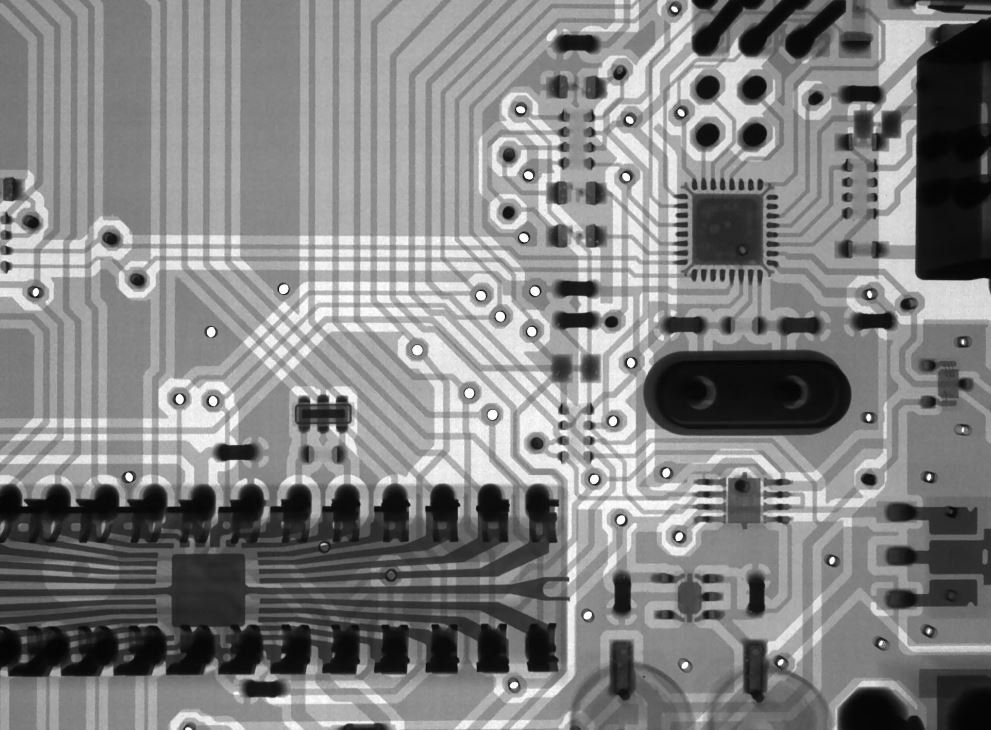Deep Learning vs. Generative AI
In the field of artificial intelligence (AI), two popular approaches that have garnered significant attention are deep learning and generative AI. Both these methodologies have their own unique characteristics and applications. While deep learning focuses on training neural networks to recognize patterns and make predictions, generative AI is designed to create new and original content. In this article, we will explore the differences between deep learning and generative AI, and discuss their respective strengths and weaknesses.
Key Takeaways:
- Deep learning is a subset of machine learning that aims to mimic the human brain’s ability to learn and make decisions autonomously.
- Generative AI involves the creation of new content, such as images, music, or text, using advanced algorithms.
- Deep learning focuses on pattern recognition and prediction, while generative AI emphasizes the creation of new, original content.
Deep learning, as mentioned earlier, relies on neural networks to process vast amounts of data and learn from it. These networks consist of interconnected layers of nodes, which simulate the structure of the human brain’s neurons. By analyzing input data and adjusting the weights between neurons, deep learning models can identify patterns and make accurate predictions. *Deep learning has achieved groundbreaking results in various domains, such as computer vision and natural language processing.*
The Power of Deep Learning
One of the key strengths of deep learning is its ability to process unstructured data, such as images, videos, and text, with remarkable accuracy. Through techniques such as convolutional neural networks (CNNs) and recurrent neural networks (RNNs), deep learning models have achieved exceptional performance in tasks like image classification, object detection, and sentiment analysis. *CNNs, for instance, can automatically identify objects in images, enabling applications like self-driving cars and facial recognition.*
On the other hand, generative AI is focused on the creation of new data rather than just interpretation. This field utilizes techniques such as generative adversarial networks (GANs) and variational autoencoders (VAEs) to produce original content. GANs consist of a generator network that learns to create realistic data, and a discriminator network that tries to discriminate between real and fake samples. *This adversarial process encourages the generator to improve its output until it can generate content that is indistinguishable from real data.*
Generative AI’s Potential
Generative AI has shown great promise in various creative fields such as art, music, and design. It can generate paintings, compose music, and even write stories by learning and recombining existing patterns and styles. *For instance, the popular deepfake technology, which generates realistic face-swapped videos, is made possible through generative AI.* Despite its potential, generative AI also faces challenges in ensuring the produced content is ethical and aligned with human values.
Applications and Limitations
Deep learning finds applications in a wide range of domains, from healthcare to finance to autonomous vehicles. It has significantly improved medical diagnoses, enabled predictive analytics for financial markets, and enhanced the performance of self-driving cars. However, deep learning models require enormous amounts of labeled data for training, and their complex architectures can be computationally intensive during both training and inference stages. *This reliance on large datasets and computational resources can limit their practicality in certain settings.*
Generative AI, with its potential for creating unique content, finds applications in creative industries like art, fashion, and entertainment. It can assist artists in exploring new styles, generate synthetic data for training in rare scenarios, and even aid in designing virtual worlds and characters. *However, ensuring fairness, accountability, and transparency in generative AI systems remains a challenge, as biases and unethical use of these technologies can arise.*
Deep Learning vs. Generative AI: A Comparison
| Deep Learning | Generative AI | |
|---|---|---|
| Focus | Finding patterns and making predictions | Creating new and original content |
| Approach | Learning from vast amounts of labeled data | Generating content based on learned patterns |
| Applications | Computer vision, natural language processing, autonomous vehicles | Art, music, fashion, design |
While deep learning and generative AI have different focuses and applications, they are not mutually exclusive. In fact, integrating both these techniques can lead to compelling advancements in AI research and applications. By combining the analytical power of deep learning with the creative capabilities of generative AI, we can unlock new opportunities for innovation and discovery in the field of artificial intelligence.
The Future of Artificial Intelligence
The field of AI continues to evolve rapidly, with deep learning and generative AI at the forefront of innovation. As research progresses, we can expect more powerful models, improved algorithms, and better understanding of these methodologies. *The future of artificial intelligence holds immense potential for societal transformation and groundbreaking advancements across various industries.* With responsible use and continuous advancements in both deep learning and generative AI, we can shape a future where intelligent machines and human creativity work hand in hand.

Common Misconceptions
Deep Learning
One common misconception about deep learning is that it is the same as machine learning. While deep learning is a subset of machine learning, it differs in its approach and architecture. Deep learning involves training neural networks with multiple layers to analyze and learn complex patterns in data. Machine learning, on the other hand, focuses on the development of algorithms that can automatically learn and make predictions based on data.
- Deep learning is not limited to image recognition tasks.
- Deep learning requires a large amount of labeled data for training.
- Deep learning models can take longer to train compared to other machine learning models.
Generative AI
A common misconception about generative AI is that it can only create realistic images or videos. While generative AI is indeed capable of creating visually realistic content, it can also generate other types of data such as text and music. Generative AI models are designed to learn patterns and generate new samples based on those patterns.
- Generative AI can be used for creative purposes such as art and music generation.
- Generative AI can help in data augmentation for training machine learning models.
- Generative AI can generate new data samples that don’t exist in the original dataset.
Deep Learning vs. Generative AI
Another common misconception is that deep learning and generative AI are two completely different fields. While they do have distinct characteristics and applications, they are not mutually exclusive. Deep learning models can also be used in generative AI to learn patterns and generate new content. In fact, generative adversarial networks (GANs), a popular approach in generative AI, often use deep learning models as their components.
- Deep learning can be used as a part of generative AI models.
- Generative AI can leverage deep learning models to improve the quality of generated content.
- Deep learning and generative AI can work together to create more advanced and innovative applications.
Real-world Applications
There is a misconception that deep learning and generative AI are primarily used in academic research and have limited real-world applications. In reality, these technologies are already being implemented across various industries and have many practical uses. For example, deep learning is used in self-driving cars for object recognition and decision-making, while generative AI is employed in creating virtual characters and enhancing video games.
- Deep learning is used in medical imaging for diagnosis and analysis.
- Generative AI is used in fashion and design industries for creating new designs.
- Both deep learning and generative AI are utilized in the film and entertainment industry for special effects and CGI.

Introduction
Deep learning and generative AI are two cutting-edge technologies revolutionizing the field of artificial intelligence. While deep learning focuses on training models to make accurate predictions and classifications, generative AI aims to generate new content based on existing data. In this article, we compare and contrast these two approaches, highlighting their unique features and applications.
Table 1: Deep Learning Applications
Deep learning algorithms have found success in various fields, powering remarkable applications such as autonomous vehicles and natural language processing.
| Application | Description |
|---|---|
| Image Recognition | Identify objects, people, and scenes in images |
| Speech Recognition | Convert spoken language into written text |
| Medical Diagnostics | Assist doctors in analyzing medical images and diagnosing diseases |
| Financial Forecasting | Predict market trends and optimize trading strategies |
Table 2: Generative AI Applications
Generative AI offers exciting opportunities, enabling the creation of new content in various domains, including art, music, and text.
| Application | Description |
|---|---|
| Art Generation | Create unique and visually appealing artworks |
| Music Composition | Compose original melodies and harmonies |
| Text Generation | Produce written content, including stories and poems |
| Game Development | Automate the creation of game levels and characters |
Table 3: Deep Learning Advantages
Deep learning offers several advantages over other AI techniques, making it highly effective in solving complex problems.
| Advantage | Description |
|---|---|
| High Accuracy | Capable of achieving state-of-the-art performance |
| Feature Extraction | Automatically learns relevant features from raw data |
| Scalability | Can handle large datasets and complex models |
| Transfer Learning | Knowledge gained from one task can be applied to another |
Table 4: Generative AI Advantages
Generative AI brings unique advantages that make it an excellent tool for creative applications.
| Advantage | Description |
|---|---|
| Creative Output | Produces novel and imaginative content |
| Exploration | Generates diverse possibilities and variations |
| Adaptability | Can learn and adapt from user feedback |
| Inspiration | Provides new ideas and sparks creativity |
Table 5: Deep Learning Challenges
While deep learning is powerful, it faces certain challenges that researchers and engineers strive to overcome.
| Challenge | Description |
|---|---|
| Data Requirements | Large amounts of labeled data are often needed for training |
| Computational Resources | Training deep learning models requires significant processing power |
| Interpretability | Understanding and explaining model decisions can be difficult |
| Overfitting | Models may memorize training data, leading to poor generalization |
Table 6: Generative AI Challenges
Generative AI also faces unique challenges in creating high-quality and realistic content.
| Challenge | Description |
|---|---|
| Coherence | Generating content that flows logically and makes sense |
| Originality | Creating content that is distinct from the training data |
| Ethical Use | Avoiding biases and offensive content generated by the model |
| Quality Control | Ensuring the generated content meets desired standards |
Table 7: Deep Learning Examples
Here are some notable examples where deep learning has achieved remarkable results.
| Example | Description |
|---|---|
| AlphaGo | Deep learning-powered program that defeated world champion Go players |
| AlexNet | A deep neural network that won the ImageNet challenge in 2012 |
| Siri | Apple’s intelligent assistant utilizing deep learning for natural language processing |
| Self-Driving Cars | Deep learning enables the perception and decision-making abilities of autonomous vehicles |
Table 8: Generative AI Examples
These examples demonstrate the creative capabilities of generative AI.
| Example | Description |
|---|---|
| DeepArt | An online platform that uses generative AI to transform photos into artistic masterpieces |
| Magenta | Google’s research project exploring the intersection of AI and music |
| GPT-3 | A language model capable of generating human-like text and conversing with users |
| StyleGAN | A generative model that creates highly realistic human faces from random noise |
Conclusion
Deep learning and generative AI represent two powerful approaches in the field of artificial intelligence. While deep learning excels in making accurate predictions and classifications, generative AI offers a creative outlet and the ability to create original content. By leveraging their respective strengths, these technologies have the potential to transform numerous industries, from healthcare to entertainment. Embracing both deep learning and generative AI opens up countless opportunities for innovation and problem-solving in the future.
Frequently Asked Questions
Question: What is deep learning?
Deep learning is a subfield of machine learning that focuses on building and training artificial neural networks with multiple layers of interconnected units to process and learn from large sets of data.
Question: What is generative AI?
Generative AI refers to a category of artificial intelligence techniques that aim to generate new data based on patterns and examples from existing data, rather than simply making predictions or classifications.
Question: How are deep learning and generative AI related?
Deep learning is a branch of machine learning that can be used as a tool within generative AI. Deep learning algorithms are often employed to train generative models, allowing them to learn complex patterns in data and generate new content.
Question: What are the main differences between deep learning and generative AI?
The main difference lies in their objectives. Deep learning focuses on learning from data to make predictions or identify patterns, while generative AI focuses on generating new data that resembles the training examples.
Question: What are the common applications of deep learning?
Deep learning has found applications in various domains such as image and speech recognition, natural language processing, autonomous vehicles, recommendation systems, and healthcare, among others.
Question: What are the common applications of generative AI?
Generative AI has been used in various creative fields, including music generation, image synthesis, text generation, and even creating realistic virtual characters or landscapes.
Question: How does deep learning model training work?
Deep learning models are trained through an iterative process known as backpropagation. The models learn to make accurate predictions by adjusting the weights of the neural network connections based on the error between predicted and actual outputs.
Question: How does generative AI model training work?
Generative AI models are typically trained using techniques such as autoencoders, variational autoencoders, or generative adversarial networks (GANs). These models learn to generate new data by capturing and reproducing the underlying patterns of the training data.
Question: Is one approach inherently better than the other?
Both deep learning and generative AI have their strengths and weaknesses, and their effectiveness depends on the specific problem or task at hand. Deep learning can excel at prediction tasks, while generative AI is better suited for tasks requiring creativity and data generation.
Question: Are there any limitations to consider when using deep learning or generative AI?
Yes, there are certain limitations to be aware of. Deep learning models require a large amount of annotated training data and extensive computational resources for training. Generative AI models might generate plausible but inaccurate or biased outputs if the training data is skewed or contains biases.




